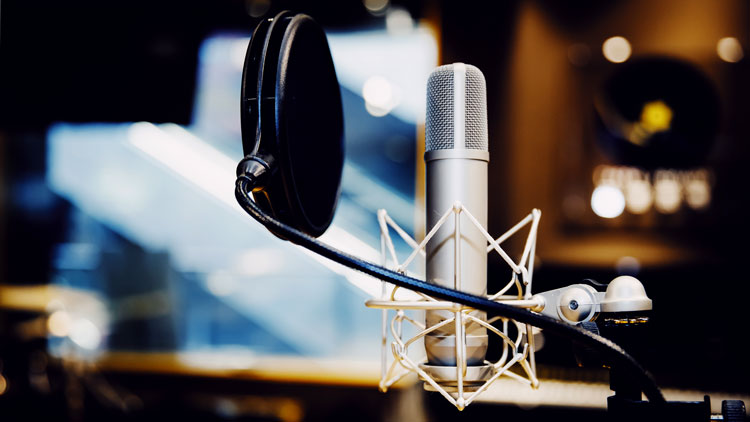At the time of recording
Some simple steps you can take to get great quality audio include:- Always use the best quality microphone you can afford.
- Choose your location carefully to avoid background noise and interruptions.
- Switch off all equipment in the room, for example air conditioning, as well as any computers or laptops that aren’t needed.
- Also turn off mobile phones, or switch to airplane mode – even on ‘silent’ a mobile phone emits a signal that can interfere with a recording.
- Close all doors and windows and make it clear to colleagues that you’re recording.
- Explain to participants that the microphone is sensitive. Don’t rustle papers nearby or put documents on top of it.
- Position speakers close to the microphone.
- Test the recording equipment before you start and make sure you know how to operate it.
- Brief your participants to avoid over-talking or interrupting – they should speak one at a time and as slowly and clearly as possible.
- If times, dates or numbers are mentioned, make them as clear as you can, to avoid inaccuracies or inconsistencies.
 After the recording
After the recording
Sometimes, despite best efforts, the quality of an audio recording is less than perfect. In this situation, there are a few things Appen can do to help.
The first step is to flag the issue. When the person tasked to transcribe the audio can’t hear what’s said, they type the word ‘inaudible’. If this happens a lot in a transcript, the transcriber will alert their supervisor, who’ll let the client know at an early stage that the transcript might not be as accurate as either they or Appen would like.
That said, transcribers can themselves take steps to reduce the number of ‘inaudibles’. At Appen, transcribers routinely use the best quality, over-ear headphones. They can also slow down or speed up a recording, or try to enhance the audio, using a professional sound card like SoundBlaster.
In some cases, for example, if a recording is very old, in an unusual format or has been made in challenging, perhaps even covert conditions, a more specialist audio management ‘fix’ is required. Depending on the circumstances, Appen may be able to:
- Cut down on interference or ‘hiss’ using noise reduction software.
- Smooth out variations in volume using an audio ‘compression’ tool.
- Reduce distortion by converting audio files into different formats.
- Enhance a recording’s clarity, by manipulating the audio channels.





 After the recording
After the recording


